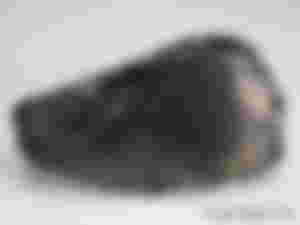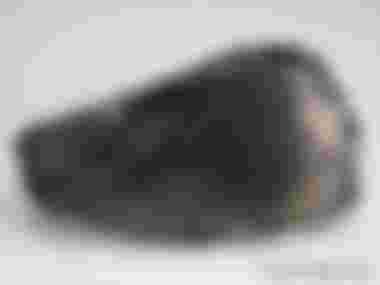Coal types and usage
I'm aware of how often I write about cola XD But in my defense, it's because it's the easiest sample to write about. I do think this will be the last from me on coal since I'll be moving to a food lab this monady. And from that point on, I will most likely be writing about bread and food analysis we do in that lab.
So coal. Coal is a decayed matter. Usually from ancient plants or animals. Fossil fuel, in short. It’s a type of non renewable energy source (as what we’re taught in schools) and if we’re being honest, it’s really inexpensive yet land feuds and the claims over reserves persist and that’s why it affects everything when coal prices move.
Anyways, in most cases, it IS used as a power source, especially for big countries and first world countries (The US alone, around 23% of its electricity is derived from coal (2019 survey)). Or countries that have a coal deposit somewhere AND has the means to process that coal into energy (power plants). But then, what people don’t know is that it has many more uses such as metal production. Yes, coal is used for making metals that we use in construction. It’s also used for cement production. The key ingredient for cement is usually a byproduct of coal. It’s also the source of your LPG (liquefied petroleum gas) and is often further processed into other chemicals like methanol, ammonia and urea. Those which are either used in the lab or are mixed into the fertilizers that the agricultural sector uses.
To further familiarize you guys with coal, I think it’s best to talk about the different types of coal or ranks it has. I believe they refer to it as ranks because of the vitrinite reflectance (measure of the incident light reflected from the surface of a polished vitrinite (I believe this is a crystal as well, not sure, we never had to rank the coal that came in the lab). So this is based on Optical microscopy. Aside from that, rank is also based on moisture content. Moisture is what we use to identify coal ranks in the lab since it’s more reliable for us.
The highest ranked coal is called Anthracite. “Hard coal” is its secondary name. It’s ranked the highest because of the extremely low volatile matter present in its constitution, as well as the % carbon. It has about 86-97% carbon. For us analysts, this is actually the easiest sample we can have… unless it was derived from ferrous pyrite, then you’ll have a case of magnetic coal on your plate. But then, if you consider that magnetic property, and the high heat value/calorific value (and high combustibility) it makes it highly ideal for metal production (mostly gold, platinum, silver. The ones used for tech fabrication) since a lot of metals melt at higher temperatures and the slow burning of this specific coal makes it ideal for continuous smelting. It’s also good to keep in mind that the fire this coal produces is one of the purest (Combustion is usually complete and sulfur content is low so there’s little need to consider environmental impact). Sadly, it’s so hard to come by this kind of coal. I believe the biggest deposits of this are in the middle east, africa and some places in central europe.

Next, you have your Bituminous coal coming in second. This is what they refer to as “Soft coal”. This coal rank has about 45-86% carbon and it would take approximately 1oo-300 million years to form this. Based on my experience, this type of coal was always sent to us in powders because after analysis, it’s immediately sent to power plants for energy production. Yup! This is the one they use for energy production because its heat value/calorific value is on par with anthracite, but then, it’s also used for producing gas (Hydrogen, Ammonia and LPG because of its high volatile matter content). That is upon burning the powders, but because of that high volatile matter content, it either turns to coke (mixed in cement or is used to produce ammonia gas) or to asphalt, both which are used for construction (and both which I already tested in a different lab I worked in)

Sub Bituminous coals have no other name, but their carbon content is around 35-45%. This is the main energy producer, and one of the biggest air pollutants because of the high volatile matter content, nitrogen content, and sulfur content. It’s relatively young coal since it only takes 100 million years to form this, so you can see why the contaminants are still considerably high for this coal rank. Despite the contaminant content, it’s still widely used for energy production and for cement production since its ashing is relatively high. In some literature I’ve read before, in my old workplace, This Coal rank is counted as a sub-rank since it’s usually interchanged with bituminous coal and lignite. What I found interesting about this rank though, is that it’s one of the most chemically modified coal, and that modification is often to enhance the energy output once it gets processed.
Last on the list is Lignite (though peat is considerably lower ranked, but most surveyors and geologists don’t consider it a rank anymore). Lignite is brown coal and the youngest coal. It also has the highest moisture and contaminant content, the lowest heat value and the lowest energy output. Despite this though, it’s still used in the energy sector. I’m pretty much against it though because this coal is the biggest greenhouse gas contributor. And the last time I handled this kind of coal in the lab, there were chunks of animal and plant matter in it, and it was so gross to have to remove those one by one.
I believe some countries wrote about how drying lignite first before using it for energy production has lessened the pollutant output, but still, it doesn’t really remove the fact that pollutants are still being emitted and that is a big no for me.

Sources:
Applied Petrology
https://doi.org/10.1016/B978-0-08-045051-3.00001-4
Fuel Flexible Energy Generatin, 2016
https://doi.org/10.1016/B978-1-78242-378-2.00002-X
Plant Engineer’s Handbook, 2001
https://doi.org/10.1016/B978-075067328-0/50023-9
Materials for Ultra-Supercritical and advanced Ultra-supercritical Power plants, 2017
https://doi.org/10.1016/B978-0-08-100552-1.00001-4
Low-Rank Coals for Power generation, Fuel and chemical production



I'm glad I still understand these stuffs hahah I am not reading my books from the past months am afraid I'll forget what I studied hahah